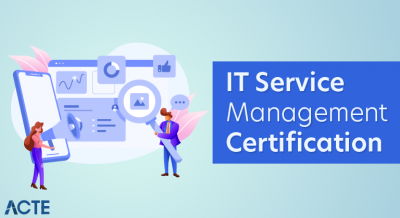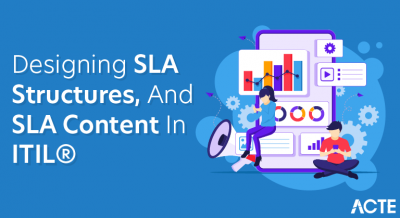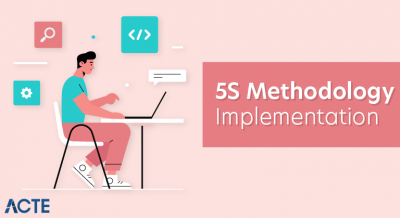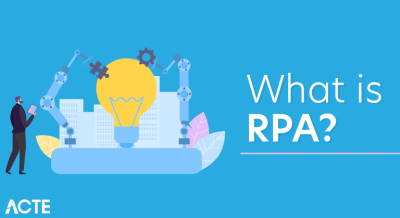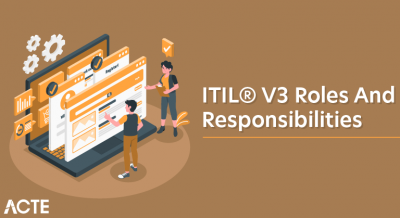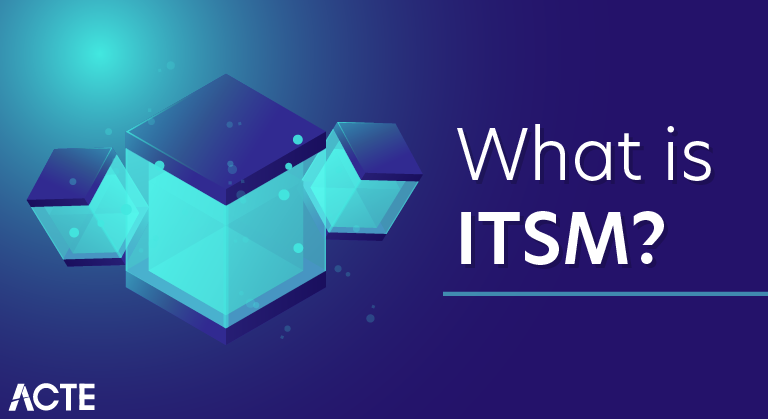
ITSM aims to align the delivery of IT services with the needs of the enterprise. The full form of ITSM is IT Service Management. The focus of ITSM tools is to deliver satisfactory service to the end-user.
ITSM is a combination of a set of defined policies, process, and methods for delivering IT products and services. It improves and supports customer-centric IT services.
TSM Processes
ITSM process helps you to manage IT services. Organizations need to manage the service’s capabilities, how it performs, changes to it, and what happens when it experiences problems.
There are many different ITSM processes which appear in various forms in the other ITSM frameworks. Here are some vital ITSM processes:
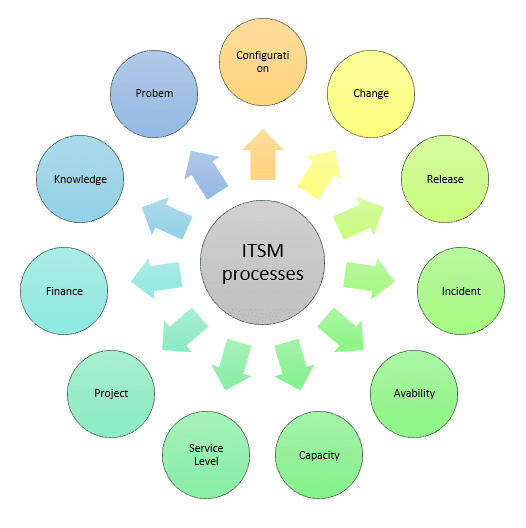
Configuration Management :
It includes the physical and logical perspective of the IT infrastructure and services
Change Management:
It is standard methods and procedures to manage all the changes made in ITSM services
Release Management:
Testing, release, and verification of changes to the IT environment.
Incident Management:
It is a day to day process, which restores normal, acceptable service with a minimal impact on business.
Availability Management:
It optimizes IT infrastructure services, capabilities, and support to minimize service outages. It also offers sustained levels of service to suit the business requirements.
Capacity Management:
Helps the organization to manage resources and also allows them to plan for future resource requirements.
Service Level Management:
It helps you to improve and maintain the level of service to your clients. It helps to meet the SLA (Service Level Agreements).
Project Management:
Project management allows IT firms to maintain orderly services to avoid issues like outdated systems.
Financial Management:
This IT service helps you to manage the costs required by the company to meet its financial obligations. These services also include the resources needed to meet requirements.
Knowledge Management:
Knowledge management helps you to avoid duplicated work by organizing and making available information about various types of IT products and services.
Problem management:
A problem is the root cause of any incident. An IT organization might temporarily solve the issue but can’t fix the problem. This may lead to incidents, so problem management is a method to fix issues to improve service delivery and performance.
How to Implement ITSM Process and Workflows

Here, are five simple steps to implement ITSM process and workflows
Step 1) Audit your current ITSM operation and find out the gaps
Step 2) Educate, communicate, and involve stakeholder while implementing ITSM processes
Step 3) Outline the critical success factors and keep a tab on KPI and metrics
Step 4) Use relevant ITSM tools to automate the process
Step 5) Develop feedback loop and other stakeholders
Popular ITSM Frameworks
An ITSM tool is a software service that is widely used to deliver IT Services. It is standalone software or a suite of applications consisting of multiple apps to focus on various functions. It also helps you to perform various functions like incident management, managing service requests, etc.
Here, are some most popular ITSM services frameworks:
- Business Process Framework (eTOM): It is a process framework for telecommunications service and providers.
- COBIT (Control Objectives for Information and Related Technologies): This is an IT Governance framework which specifies control objectives, metrics, and maturity models.
- FitSM: It is a standard for lightweight service management. It streamlines a service management framework typically aligned with ISO/IEX 20000.
- MOF (Microsoft Operations Framework): It includes a general framework of service management functions and guidance on managing services based on Microsoft technologies.
- Six Sigma: This framework helps you to focus on your core objectives, collecting data, and analyzing. It helps to reduce defects in services and products.
- TOGAF (The Open Group Architecture Framework): It is created and managed by an open group as a method to provide businesses with a structure for implementing the technology.
ITSM Success Factors
In ITSM framework, effectively managing IT as an enterprise-wide, service-oriented entity. It generally comprises following separate and distinct perspectives. It plays a crucial part in ITSM Success factors:
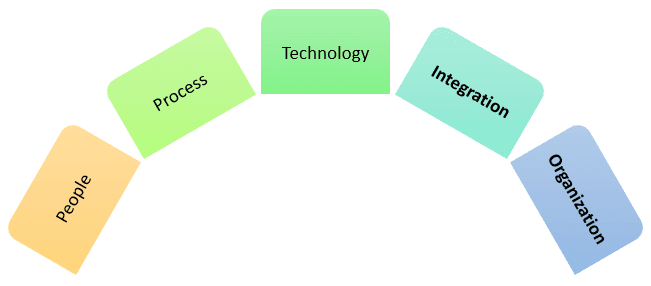
People – Helps you to offer quantity and quality of expertise and knowledge.
Process – IT and organization-specific practices, guidelines, procedures, etc.
Technology – It offers logical and physical technology infrastructure consisting of hardware, applications, DBMS, etc.
Organization
Internal and external business factors which affect IT, how IT and the organization interface, what is the organizations. It also includes how it does affect IT services.
Integration
It is also important how IT services should be integrated with a specific business model. It also includes what services does IT provide, how are the services are offers.
Traditional IT vs. ITSM Processes
ITSM services always focus on better management of technology. But it mainly focuses on addressing the importance of aligning different IT services with business needs. Here are important attributes that have gone through a change from traditional IT to ITSM processes:
| Traditional IT | ITSM Process |
|---|---|
| Technology Focus | Process Focus |
| Fire Fighting | Prevention |
| Reactive | Proactive |
| Focuses of users | Focuses on customers |
| Centralized | Distributed |
| Mostly Isolated | Integrated |
| Informal processes | Formal processes |
| One-off | Repeatable |
| Use for IT perspective | Use for business perspective |
| Operational oriented | Service orientation |
Challenges of ITSM
Here are important challenges while working with the ITSM process:
- Difficult to adapt to the team
- Maintaining regulatory compliance
- Risk and security concerns
- It does not offer visibility across teams
- Not offers any coordination with developers
- Avoiding unplanned downtime
What is ITSM Certification?
The ITSM Certification is governed by STQC, RCB, ISO/IEC 20000-1. Professionals with the ITSM Certification are trained with IT practices which helps them to deliver appropriate business solutions over a wide variety of IT-related requirements.
These professionals are being trained with IT best practices that allow them to deliver appropriate business solutions over the specific demands of their clients.
Benefits of Certification:
- Acquisition and retention for the best resources and skillsets
- Aligning and integrating IT and business goals.
- Helps yo to improve the success of project delivery
- Allows you to achieve the best return on your investment
- Offers best practices that are helpful for effective IT governance.
- Managing business changes.
- ITSM certified candidates should be recognized experts in the effective and efficient use of people, process, and products.
Benefits of ITSM services
Here are some important benefits of using ITSM services:
- Repeatable and highly scalable processes
- Helps you to define roles and responsibilities
- Allows you to improve your productivity
- Helps you to shorten the gap between detecting incidents and it’s solutions
- Ability to identify and address repeat problems
- Analytics to measure and improve Its performance
- ITSM offers better service at a lower cost
- ITSM quickly reacts to change and innovation in the market
- Employees able to know what services are available and how they should use them
- Improves quality and productivity Reduces costs
- Enhances customer relationships and service
- Increases teamwork and collaboration
- Provides information security and risk reduction
Disadvantages of ITSM services
Here are cons of using ITSM services
- All the ITSM frameworks are not compatible. They can’t be integrated with all IT Related services used in an organization.
- Some frameworks do not support specific operating systems, web-based services, or cloud platforms.
- If your organization relies on using certain software or web services, then it is vital to check the compatibility of the chosen ITSM
- There are few ITSM platforms which do not offer good scalability. This can be more of an issue with big organizations and those companies on a rapid expansion spree.
- It may prove to be counterproductive in the long run.


